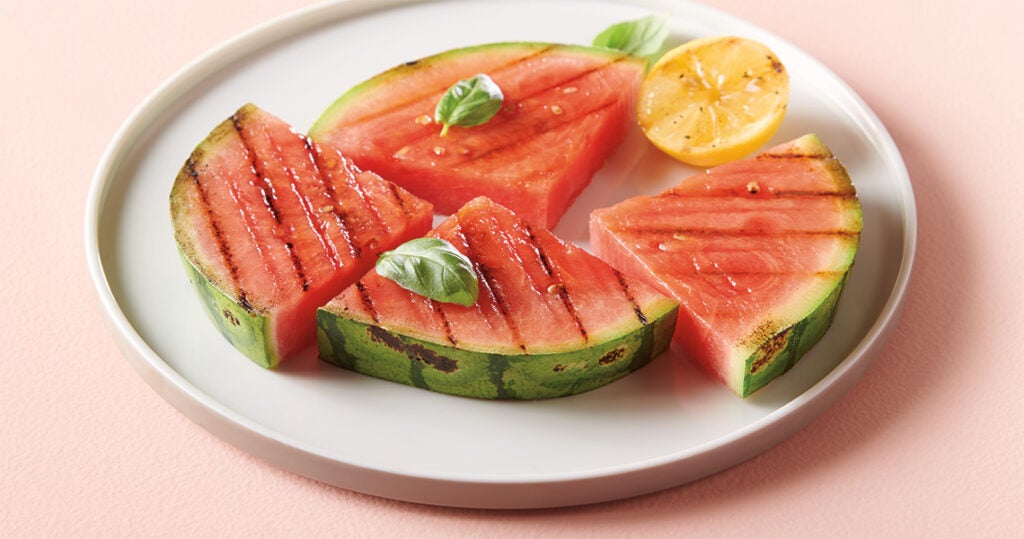Call it barbecue, BBQ or just plain ‘cue, that which we call a roast by any other name is just plain delicious.
Fire and smoke, the oldest cooking method on the planet, is new again as restaurants add global flavor mashups to the barbecue menu. A couple of years after Korean flavors made a splash, new flavors are joining the party.
In addition to barbecue meat in bibimbap bowls with gochujang sauce, operators are branching out and using other Asian flavors. There’s Indian butter sauce on barbecue chicken sandwiches, smoked meats added to lasagna, as well as a variety of sauces, seasonings and sides that incorporate global flavors and pair well with smoky, barbecue meats.
“How creative do you want to get? You can pretty much put anything you want in a smoker,” said Kevin Green, a Detroit-area Gordon Food Service® Culinary Specialist. “You can smoke a watermelon as a vegetarian option. Just marinate it, smoke it and slice. It looks just like smoked ham on a buffet.”
Mediterranean Mashups
Traditionally, barbecue is about meat (or seafood) and smoke. This familiar canvas is a great place for chefs to introduce flavor mashups using ingredients uncommon to North American barbecue.
“I’m seeing Mediterranean flavors from Turkey,” Culinary Specialist Bill Barker said. He calls out Meat Moot Smoking, an Istanbul-based chain now open near Chicago.
“They are primarily doing a lot of beef and lamb — necks, shoulders, ribs and leg quarters — no pork or chicken,” Barker noted. “Instead of using sweet or spicy rubs, they use ingredients like cinnamon, sumac and clove.”
The heat and smoky flavor come from natural lump charcoal. There’s no flavoring from cherry, apple or mesquite wood chips. The meats are slow-smoked, then wrapped in plastic and foil to lock in moisture during finishing. The cuts are then served with 14 sauces, including chimichurri, garlic with olive oil, honey mustard, lime and tahini. Sides include eggplant, couscous and spinach pineapple salad.
Stick to Barbecue Basics
While global spices and seasonings can enhance smoked meats and seafood, don’t go overboard. Extra ingredients and preparations take money and time, which Houston-based Culinary Specialist Erin Copeland says will affect budgets and labor capacity.
“Good barbecuers keep the ingredients and the process simple,” she said. “Keep the menu small by doing five or six meats and five or six sides. If they are super flavorful and well-executed, people will love them and be lined up outside your door and around the corner.”
Instead of expanding the menu, operators can turn to retail for extra income.
“Bottle and package your barbecue sauce or spice rub, make hats, sell cooking classes,” Copeland said. “Those revenue streams can help offset the cost of barbecue.”
Sides: BBQ Cash Cow
Another profit maker is side dishes. Ohio-based Business Solutions Specialist Abby Windau also sees sides as a vehicle for global flavor. Examples include smoked saffron rice, zucchini fritters with a Greek yogurt dipping sauce, or an ear of smoky elote with chili powder.
It’s also possible to turn a side into an entrée. Twice-baked smoker potatoes can be served with a small helping of barbecue meat and smothered with cheese or a dollop of sriracha sour cream. The same for mac and cheese — just add some protein with zesty global flavors and you have a meal worth way more than the sum of its parts.
“With good sides that feature colorful, global flavor mashups, you can downplay the fact that you are serving smaller portion sizes of barbecue meat,” Windau said. “If you create exclusiveness — a flavor you can only get here — it will drive traffic.”











